Product Overview
A Largemouth Bass trophy fish mount from Gray Taxidermy is handcrafted in the U.S. We combine over fifty years of experience and skilled craftsmanship to ensure that your custom trophy mount exceeds your expectations of what a perfect custom fish mount should look like.
Our skilled artists take pride in capturing the rich beauty and realism of nature that each unique marine species bring.
A fish mount from Gray Taxidermy will capture and commemorate a memory of a life time. We are able to transform raw materials into the ultimate representation of an angler's most notable achievement. Great attention to detail and true craftsmanship is our motto while we continue to serve customers around the world.
Gray Taxidermy goes to great lengths to ensure the precise color and characteristics are resembled in your custom fish mount.
Before leaving our facility, each custom fish mount is thoroughly inspected to ensure our goal of 100% customer satisfaction.
If you want to complete your trophy wall with a unique action scene by adding baitfish along your mount, we have a variety of baitfish mounts to choose from.
Product Specs:
- Available Sizes: 12" - 29"
- Details: Fired-Enamel Glass Eye
- Product Options: Wood Plaque, Custom Base, 360°
-
We also offer elegant solid wood plaques to accompany yor trophy mount. Includes traditional wood plaque with sublimated personalized information. Just ask for more information
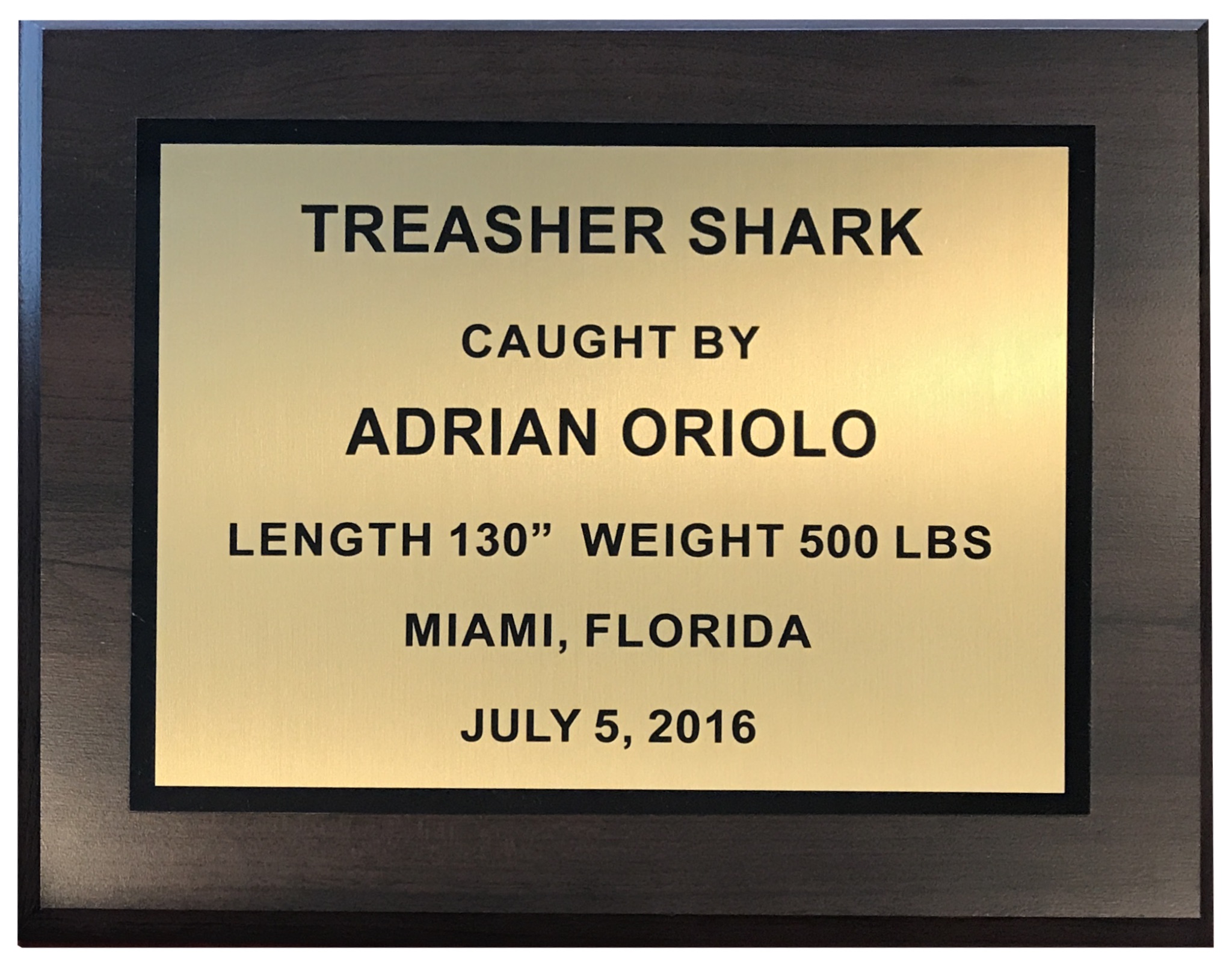
 15 in x 12 in or 10 in x 8 in personalized wood plaque.
15 in x 12 in or 10 in x 8 in personalized wood plaque.
Color: Gold
 15 in x 12 in or 10 in x 8 in personalized wood plaque.
15 in x 12 in or 10 in x 8 in personalized wood plaque.
Color: Blue
Species Information
Scientific Name: Micropterus salmoides
Weight: 20-55 lbs.
Location & Habitat: Largemouth Bass current range includes the U.S., South Africa, Europe, Guam, Japan, Lebanon, New Zealand, and the Philippines. The original range of the largemouth bass is most of the eastern half of the United States, however it is now found generally in the majority of the United States, including swamps, ponds, lakes, reservoirs, creeks and large rivers. The bass can even be found in estuaries. It prefers weedy oxbows and clears floodplain lakes. Since it is generally a warm water fish, it is found at depths of more than 18.8 feet.
During the winter, largemouth bass generally will move into deeper waters. In the spring, largemouths migrate into bays that have warmed up sooner than that of the main body of water. During the day, largemouth bass may cruise above aquatic plants at depths of 3.1-9.4 ft, or lie under lily pads or in the shade of overhanging trees, piers, or brush. In the evening hours, largemouth bass tend to move into shallow water to feed. After night falls, they return to deeper water, where they rest on the bottom under logs or trees. In cold temperate climates, largemouth bass generally move into deeper waters during the winter months followed by movement to warmer, shallow waters in the springtime.
Description: The largemouth bass has a large, slightly sloping mouth. Its body is slender to robust, slightly compressed laterally, and oval in cross section. The corner of the mouth extends past the eye. The two recognized subspecies of the largemouth bass are the northern largemouth and the Florida largemouth.
The Florida largemouth has slightly smaller scales than the largemouth bass in relation to the size of its body. It has 69 to 73 scales along the lateral line, compared to 59 to 65 on the northern largemouth. It grows faster and reaches larger sizes in warm waters than the northern largemouth, leading to its popularity in stocking efforts across the U.S. The back and head are dark green to light green in color with lighter sides and a whitish belly and underside of the head. A lateral stripe may be seen running from the snout through eye to the base of the tail.
Towards the tail, there is a series of blotches of varying size. These blotches evolve into a solid, even stripe on the caudal peduncle. The eye is golden brown. Vertical fins lightly pigmented, paired fins generally clear; caudal fin alike in young and adult. Adults from mud-bottom lakes are dark olive brown to black, with markings hardly distinguishable. Males in breeding condition tend to be darker in overall color. The largemouth bass has well-developed pharyngeal jaws consisting of six major pads of caniform teeth in the upper pharynx and two pads in the lower pharynx. There are no teeth present on the tongue.
Biology: The average length is 18 inches but the largemouth bass may attain a length of 24 inches or more. Females may reach a maximum age of 9 years, while the males reach a maximum of 6 years.
Contact us for any questions. you may have. [Complete Molding Process]

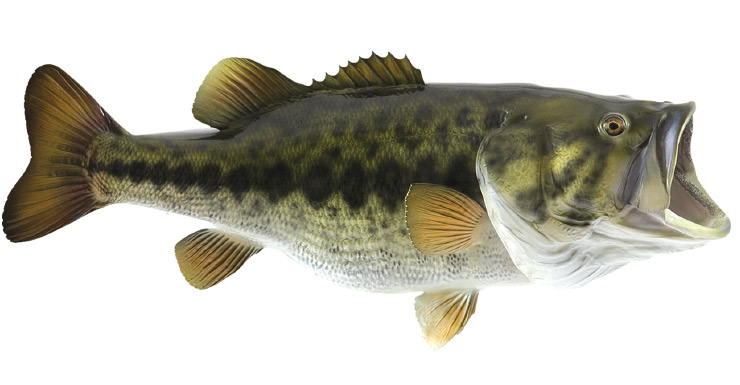
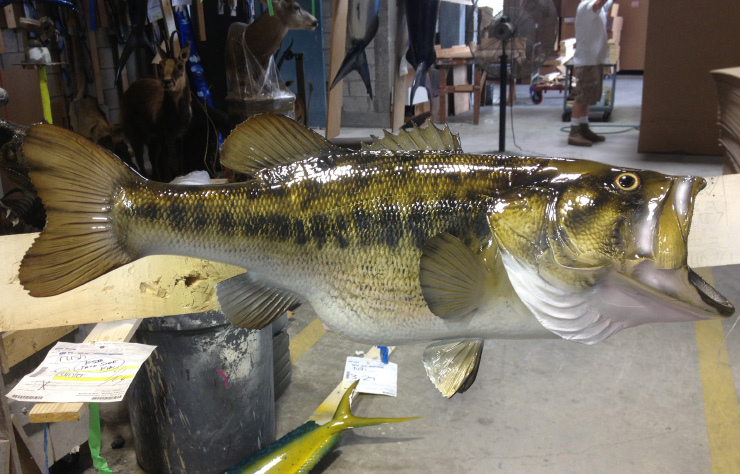
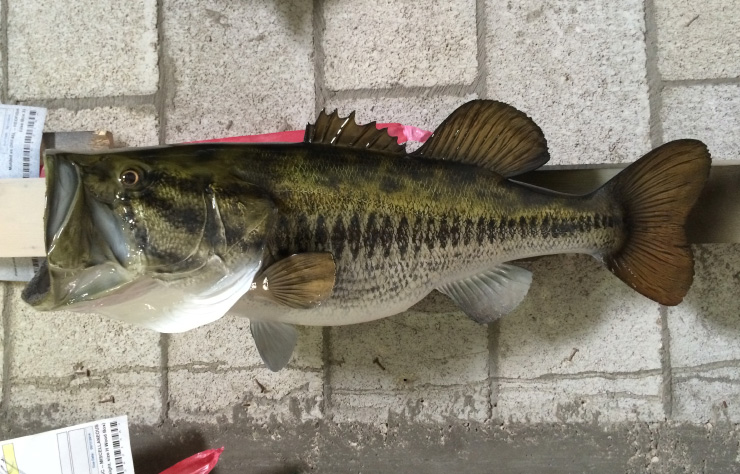
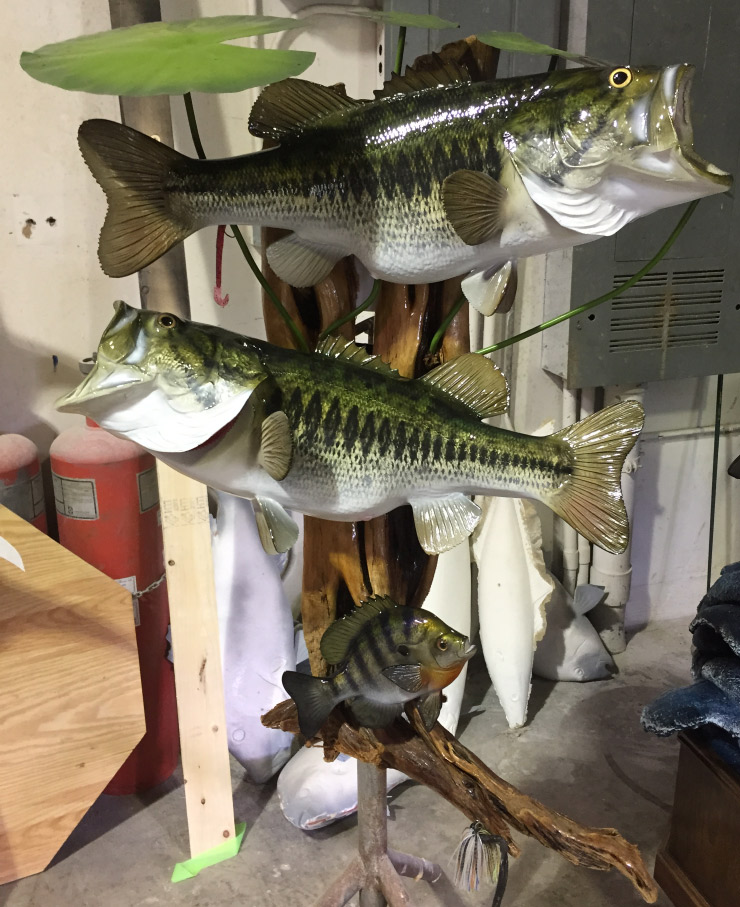
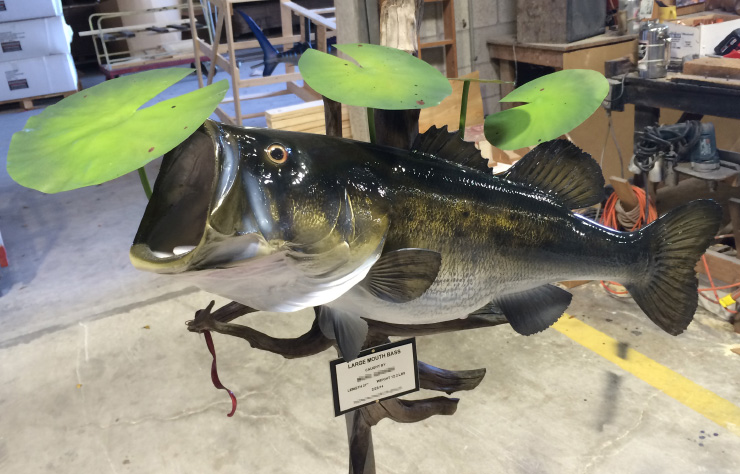
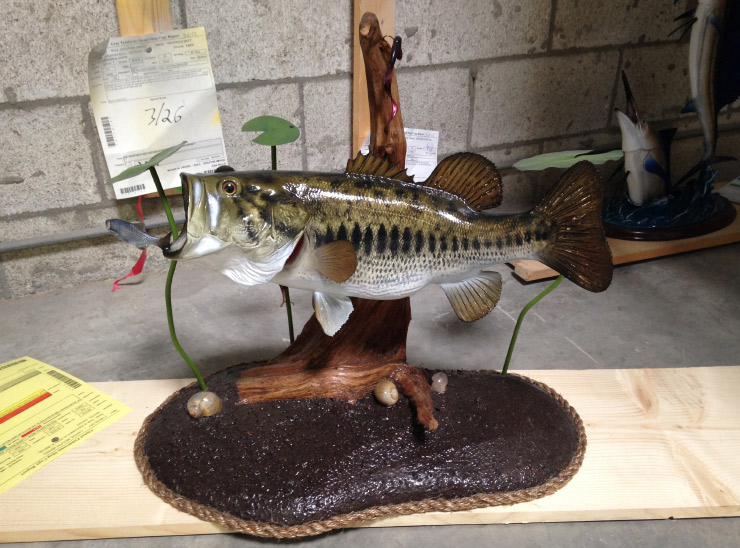
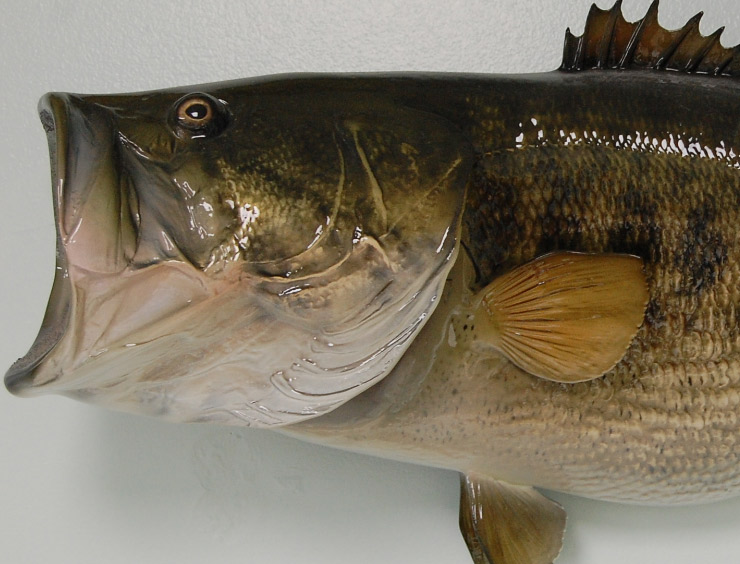

Call Now: 800.452.5501